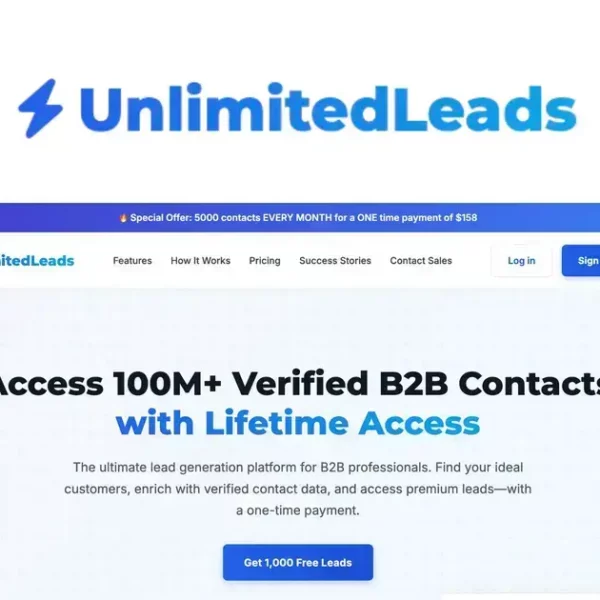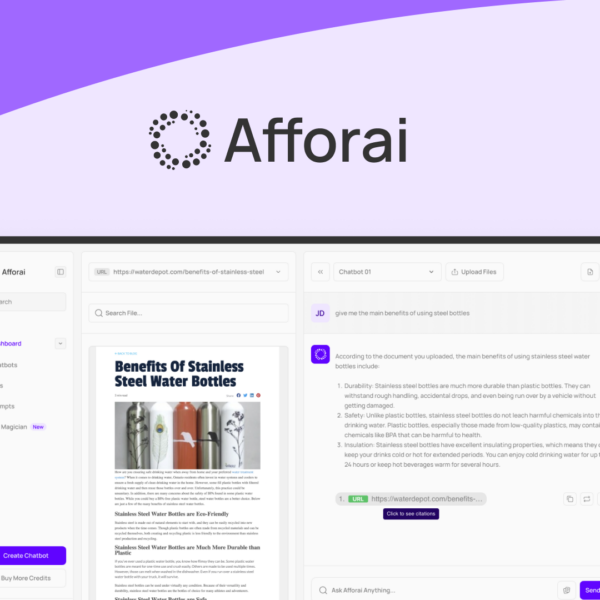SaaS for small businesses provides cost-effective, scalable, and accessible software solutions that enhance productivity and collaboration. By choosing the right tools and implementing them effectively, businesses can streamline operations and remain competitive in today’s market.
SaaS for small business is a game-changer in the digital landscape. This innovative software delivery model allows small enterprises to leverage technology without heavy upfront costs. Many small businesses are turning to SaaS solutions to optimize operations, streamline workflows, and boost productivity. In this article, we’ll dig deeper into what SaaS is, its benefits, and the best tools you can adopt.
What is SaaS and How It Works
What is SaaS? Software as a Service (SaaS) is a cloud-based delivery model where software applications are hosted on the internet and made available to users via a subscription. Unlike traditional software that requires installation on individual computers, SaaS allows access from any device with an internet connection. This model is particularly advantageous for small businesses, as it reduces the need for extensive IT infrastructure and maintenance.
How SaaS Works
With SaaS, users can log in to access the application hosted on a service provider’s server. The provider manages the software, handles updates, and ensures security, freeing businesses from the technical burdens of managing software installations and infrastructure. This model typically operates on a subscription basis, allowing businesses to pay only for what they use.
Key Features of SaaS
- Accessibility: Users can access SaaS applications from anywhere, promoting remote work and flexibility.
- Scalability: Businesses can easily adjust their subscription plans based on their needs, adding or removing features as necessary.
- Cost-Effectiveness: SaaS reduces upfront costs associated with purchasing software and hardware.
- Automatic Updates: Providers handle regular updates, ensuring that users always have access to the latest features and security measures.
- Collaboration Tools: Many SaaS applications include features that allow teams to collaborate in real-time, enhancing productivity.
Benefits of SaaS for Small Businesses

Benefits of SaaS for Small Businesses
Using Software as a Service (SaaS) can provide numerous advantages for small businesses. One of the primary benefits is the cost savings. With SaaS, businesses do not need to invest in expensive hardware or software licenses. Instead, they can subscribe to services based on their needs, allowing for better budgeting and financial management.
Increased Accessibility
SaaS applications can be accessed from any device with an internet connection. This flexibility is essential for small businesses that often have remote employees or need to work from various locations. Teams can collaborate seamlessly, regardless of where they are.
Easy Scalability
As a small business grows, its software needs may change. SaaS allows businesses to easily scale their services up or down. They can add new users or features without the need for major overhauls or migrations, making it easier to adapt to changing business environments.
Automatic Updates
Another significant advantage is that SaaS providers handle software updates automatically. This means small businesses can always use the latest version of the software without worrying about manual updates or potential downtime.
Enhanced Security
Many SaaS providers invest heavily in security measures to protect customer data. This can be especially beneficial for small businesses that may lack the resources to implement comprehensive security systems. SaaS solutions often have backup and recovery services built in, reducing the risk of data loss.
Focus on Core Business
By offloading IT management and maintenance to SaaS providers, small businesses can focus more on their core operations and growth strategies. This allows them to allocate resources and time to areas that will help them innovate and serve their customers better.
Top SaaS Tools for Startups
Top SaaS Tools for Startups
When launching a startup, choosing the right tools can be crucial for success. Here are some of the top SaaS tools that can help startups manage their operations efficiently:
1. Project Management Tools
Trello is an effective tool for managing projects and tasks. With a user-friendly interface, it allows teams to collaborate on projects by creating boards and cards that represent tasks.
Asana is another great project management option. It helps teams track their work, set deadlines, and ensure everyone is aligned on goals.
2. Communication and Collaboration
Slack offers a platform for team communication where users can create channels for specific topics and easily share files. This enables effective collaboration and keeps teams connected.
Zoom allows for video conferencing, which is essential for remote teams or businesses that need to connect with clients. It offers features for webinars and large meetings, enhancing communication efforts.
3. Customer Relationship Management (CRM)
HubSpot provides a complete CRM solution that helps startups manage customer interactions and track leads. It offers valuable insights into customer behavior and offers tools for marketing automation.
Salesforce is another powerful CRM platform. It helps businesses automate their sales processes, track leads, and manage customer relationships effectively.
4. Accounting and Finance
QuickBooks Online is a popular accounting software that helps startups manage their finances. It simplifies invoicing, expense tracking, and reporting, making accounting effortless.
Xero is another robust accounting tool that allows for integration with various applications, streamlining the financial management process.
5. Email Marketing
Mailchimp is a widely used email marketing platform that helps businesses create and manage campaigns. It offers user-friendly templates and analytics to track campaign performance.
Constant Contact is another effective email marketing service, ideal for startups looking to engage customers and promote their products or services through email campaigns.
Choosing the Right SaaS for Your Business

Choosing the Right SaaS for Your Business
When selecting a SaaS solution for your business, it’s important to consider several factors that will ensure you make the best choice for your needs. Here are key elements to think about:
1. Identify Your Needs
The first step is to clearly define what your business needs are. Assess the specific challenges you want to address, whether it’s improving customer relationship management, enhancing project management, or streamlining accounting processes. This clarity will guide your search for the right SaaS tools.
2. Evaluate Usability
Look for SaaS applications that are user-friendly. A system that is easy to navigate will improve adoption rates among your team and reduce training time. Request demos and read user reviews to understand the user experience better.
3. Check Integration Capabilities
It’s essential to choose SaaS tools that can integrate seamlessly with your existing systems. This will save time and effort, ensuring a smooth flow of data between platforms. For example, if you use a particular CRM, make sure the SaaS tool can sync with it effectively.
4. Consider Scalability
Your business is likely to grow over time, so choose a SaaS solution that can scale with you. Look for options that allow you to add new features or users as your needs change. This will save you from having to switch platforms as your business expands.
5. Budget and Pricing Structure
Review the pricing models of different SaaS tools. Some may charge per user, while others have flat fees. Make sure to evaluate your budget and understand the total cost of ownership, including any add-ons or additional fees that may apply.
6. Customer Support
Reliable customer support is crucial when using SaaS solutions. Check what kind of support is offered, such as live chat, phone support, or online tutorials. Great support can make a significant difference, especially when you face challenges while using the software.
7. Read Reviews and Testimonials
Before making a decision, read reviews and testimonials from other users. Learning about their experiences will help you gauge the software’s performance and reliability. Industry-specific reviews can also provide insights relevant to your business.
Implementing SaaS Successfully
Implementing SaaS Successfully
Implementing a Software as a Service (SaaS) solution can greatly enhance your business processes, but doing it successfully requires careful planning and execution. Here are key steps to ensure effective implementation:
1. Assess Your Current Infrastructure
Before you begin implementing SaaS, evaluate your existing systems and workflows. Understand what tools you currently use and how they integrate. This will help you identify gaps that SaaS can fill and ensure a smoother transition.
2. Involve Key Stakeholders
Get input from all relevant stakeholders, including team members who will use the software. Their insights can help you select the right tool and create a buy-in for the new system. Involving everyone early can reduce resistance to change.
3. Plan the Migration Process
Creating a detailed plan for migrating data and processes to the new SaaS solution is crucial. Identify what data needs to be transferred, how to handle it, and develop a timeline for when the migration will occur. Ensure that all necessary data is backed up before beginning.
4. Provide Training and Support
Once the SaaS tool is implemented, offer comprehensive training to your team. Help them understand how to use the software effectively. Providing ongoing support can also help users adapt more quickly and efficiently.
5. Monitor Performance and Gather Feedback
After implementation, continuously monitor how the SaaS solution is performing and gather feedback from users. This will help you address any issues quickly and understand how the tool is impacting your business. Use this feedback to make adjustments and optimize usage.
6. Establish a Review Process
Regularly review the SaaS solution to ensure it meets your evolving business needs. As your business grows, the requirements for your software may change. Regular assessments can help identify when it’s time to upgrade or switch to a new solution.
7. Ensure Data Security
Make data security a priority during the implementation process. Ensure that the SaaS provider complies with industry standards for data protection. Discuss security practices and policies with your provider to safeguard sensitive business information.
In Conclusion: Embracing SaaS for Your Business Success
Choosing and implementing the right Software as a Service (SaaS) solutions can significantly transform your small business. With benefits like cost savings, scalability, and enhanced collaboration, SaaS tools help small businesses streamline operations and stay competitive in a fast-paced market.
By carefully assessing your needs, involving stakeholders, and providing proper training, you can ensure a successful implementation of SaaS. Regular monitoring and gathering feedback will help you adapt and optimize your software usage over time.
Embracing the power of SaaS is not just about keeping up with technology; it’s about unlocking new levels of productivity and growth for your business.
FAQ – Frequently Asked Questions about SaaS for Small Businesses
What is SaaS and how does it work?
SaaS, or Software as a Service, is a cloud-based software delivery model where applications are hosted online and accessed via the internet.
What are the main benefits of using SaaS for my business?
SaaS offers cost savings, scalability, ease of access, automatic updates, and strong security measures, making it ideal for small businesses.
How should I choose the right SaaS tools for my company?
Identify your business needs, evaluate usability, check integration capabilities, and consider budget and customer support before making a decision.
What steps should I take for a successful SaaS implementation?
Assess your current infrastructure, involve key stakeholders, plan the migration, provide training, and monitor performance for success.
How can I ensure data security when using SaaS solutions?
Choose reputable SaaS providers that comply with industry security standards and have strong data protection measures in place.
Can SaaS tools help my business grow?
Yes, by streamlining processes and improving collaboration, SaaS tools can significantly enhance productivity and support business growth.




